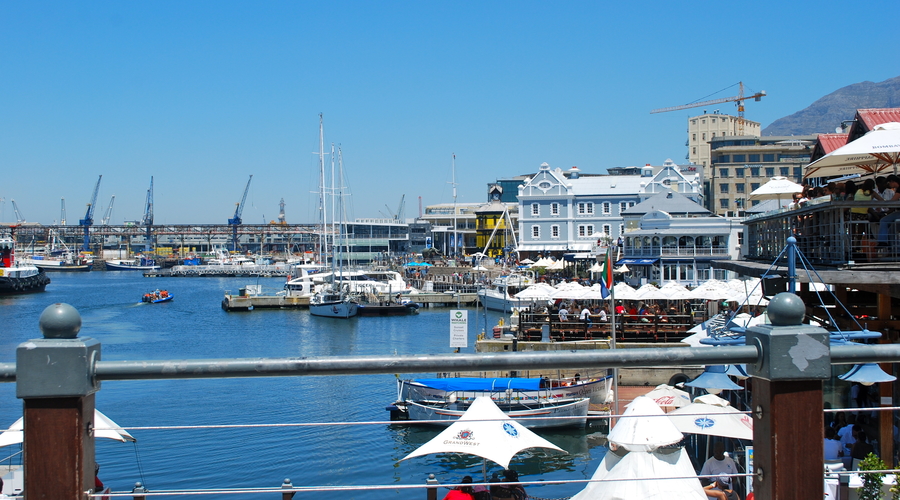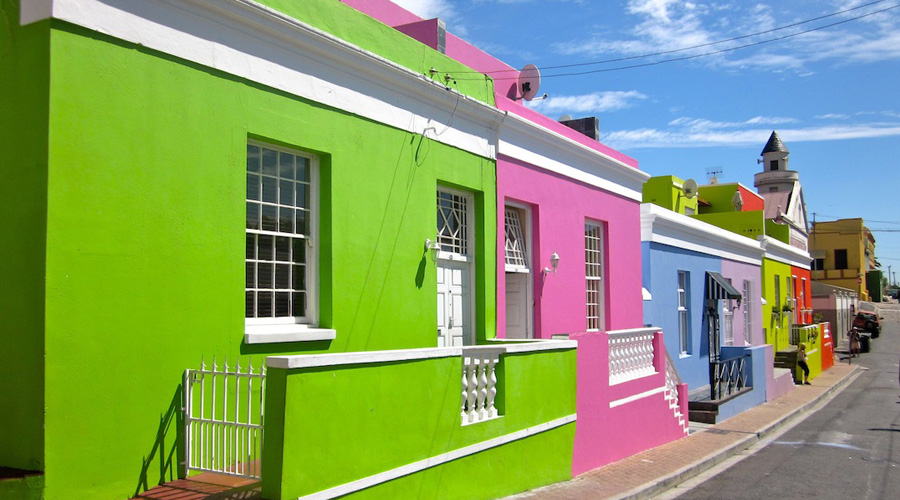

Around Cape Town – Part 1
V&A Waterfront – If the weather isn’t good enough to go to the top of Table Mountain, then a visit to the Victoria and Alfred Waterfront is probably the next best thing to do. Developed from now redundant docklands, this area boasts the best of just about everything Cape Town has to offer, including hotels, shopping, dining and entertainment, against the glorious backdrop of Table Mountain itself.
As well as the normal major retailers and international brands, in the Alfred Mall and Clock Tower Shopping Centre you’ll find a range of art, jewellery and specialty shops. As well as the Watershed, the new home for African craft and design. The Two Oceans Aquarium is always worth a visit, there is the Springbok Rugby Museum for sports fans and there is usually some form of live entertainment to watch.
It is also still a working harbour so you can watch tugs pulling the cruise ships in and out of the bay, or you can take a boat trip if you want a bit of fresh air. Most important, the ferry to Robben Island leaves from Clock Tower Square, but it’s always busy so be sure to book your ticket early.
And when you are feeling peckish, there are more than 80 different places to eat here so you will always find something to your liking.
Bo-Kaap – Situated at the foot of Signal Hill is Cape Town’s most colourful suburb, Bo-Kaap, the spiritual home of the Cape’s Muslim community. Just head along Wale Street until you catch sight of the many brightly painted Georgian terraces and narrow cobbled streets.
Bo-Kaap has a history just as colourful as the houses. Many of the residents are descendants of slaves from Malaysia, Indonesia and other African countries who were brought to the Cape of Good Hope by the Dutch during the 16th and 17th centuries.
They were known as “Cape Malays” (not quite true since they were not exclusively of Malaysian descent), but the term has stuck and Bo-Kaap is also known today as the Cape Malay Quarter.
To learn more, visit the Bo-Kaap Museum. The building dates back to the 1760s and is the oldest house in the area still in its original form. The main focus is the contribution made by early Muslim settlers and provides a glimpse of the life of a typical Malay family.
South Africa’s first mosque, the Auwal, founded in 1797, is not far from here, just along Dorp Street, but only 2 of the original walls remain now after it collapsed in 1930.
You must take time out for a traditional Cape Malay meal at one of the restaurants. The recipes are centuries old and heavily spiced.
Next a bit about Robben Island, in Part 2
